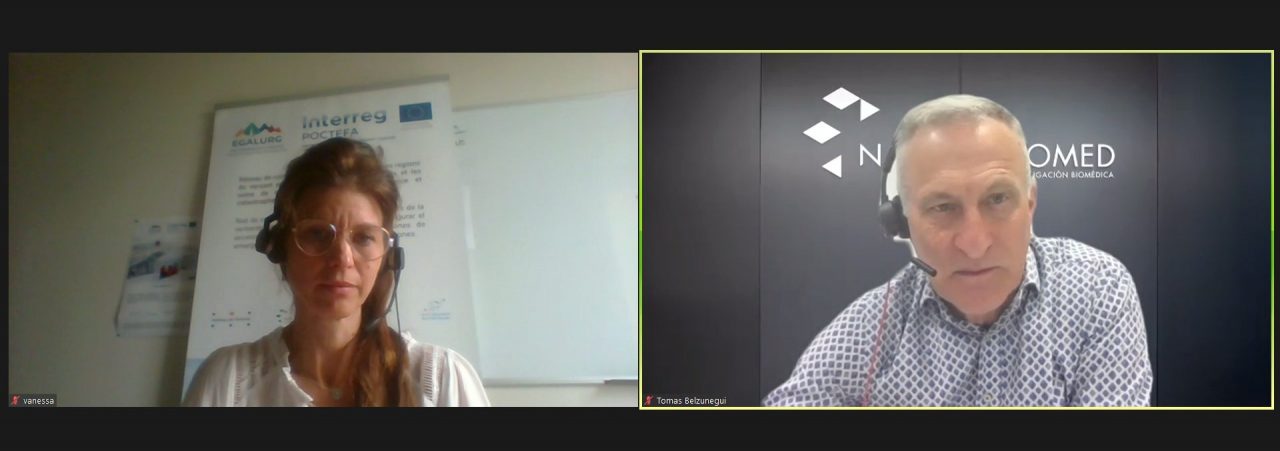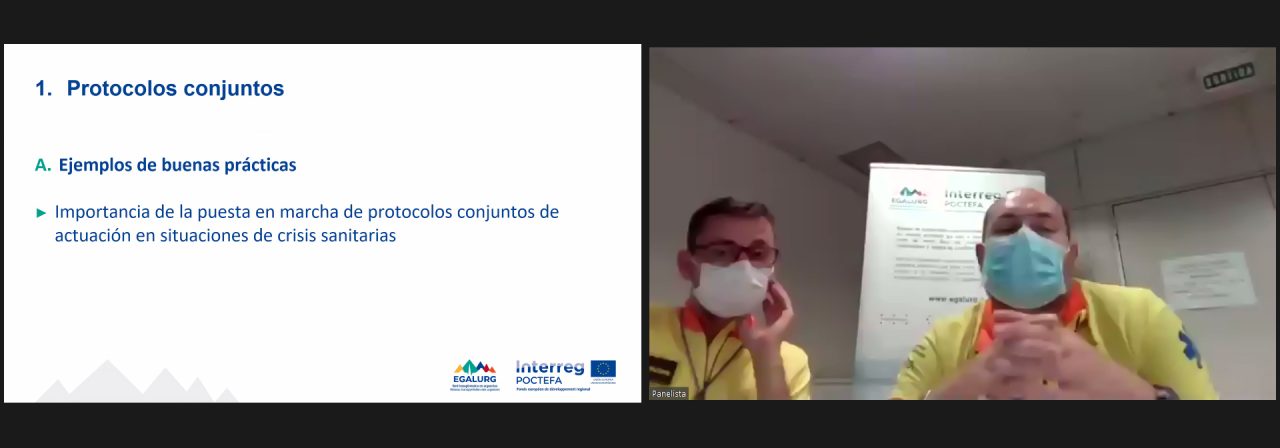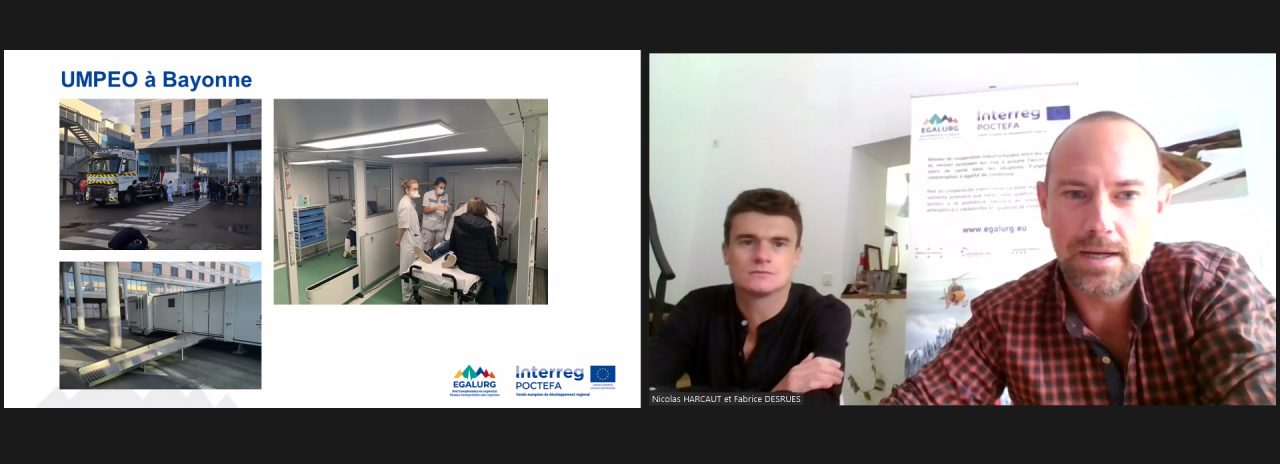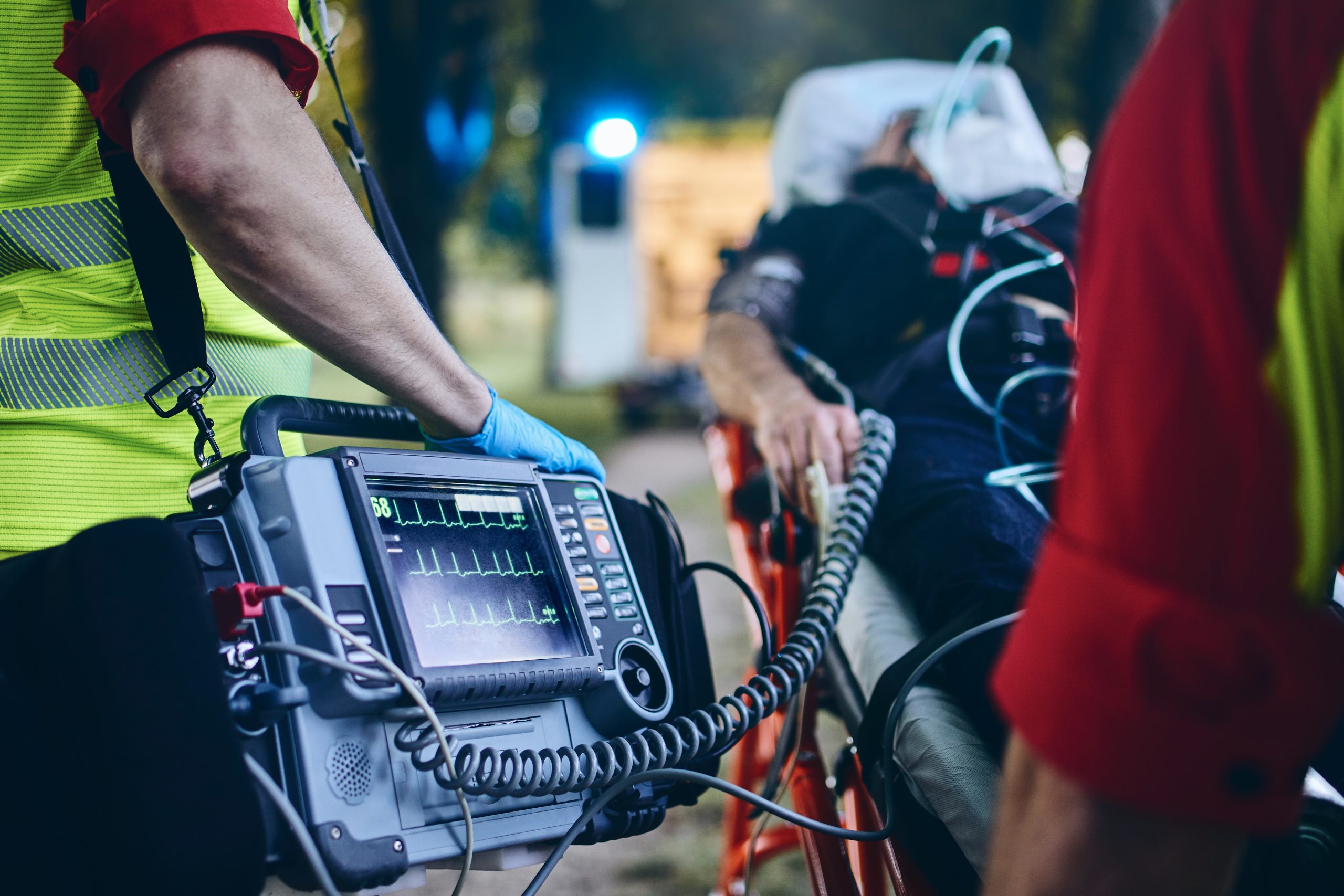The project leaders presented the key points of this innovative initiative and the benefits for healthcare systems in the regions on both sides of the Pyrenees.
The webinar “Challenges for Emergency and Disaster Medicine in the Pyrenees,” organized by the EGALURG cross-border cooperation network and held on Tuesday, June 29, was attended by more than 80 people. The leaders of the initiative described the action taken to improve healthcare in the regions on both sides of the Pyrenees and presented innovative tools that improve conditions for patients and healthcare personnel, such as the Europe Occitanie Multipurpose Mobile Unit (UMPEO), which is being used in the fight against COVID-19.
Vanessa Houzé-Cerfon, the Director of the EGALURG network and a research coordinator in Emergency Medical Services at the Hospital Center of Toulouse (CHUT, leader of the initiative), was the first speaker. She described the project and said, “Our main goal is to create an operational cooperation network in emergency and disaster medicine to favor equal access to healthcare in all regions.” She went on to describe the benefits of the UMPEO developed by the CHUT and highlighted how quickly it can be deployed in crisis situations. She also presented the UMPEO’s accessory drone and satellite network, which are used to optimize care for patients in isolated locations.
The second speaker was Tomás Belzunegui Otano, the Scientific Director of the EGALURG Project at Navarrabiomed and Associate Dean of the Degree in Medicine at the Universidad Pública de Navarra (UPNA). He presented the map prepared by the UPNA research group of the healthcare resources in the region. He also described the database that will contain all the information on patients treated for multiple injuries. “We are developing a common database to be able to extract technical information and learn about good practices that can increase our patients’ survival rate,” he said. He also gave a very positive assessment of the experience with the UMPEO in Navarre. It was used to administer COVID-19 vaccines to a total of 750 people living in rural areas in the region.

Jorge Morales, the Medical Director of Emergency Medical Services of Catalonia (SEM), stressed the importance of creating joint action protocols in times of healthcare crisis. He said, “One of the biggest problems facing emergency services in cross-border areas is that major disasters with many victims can happen here and we all have to cooperate during these situations. Protocols must be simple and uniform.” SEM is also engaged in another task: creating a master’s degree program on emergency and disaster medicine that will be offered in 2022 by Université Paul Sabatier in Toulouse and the Universitat de Barcelona.

The final speaker was Nicolas Harcaut, a member of Emergency Medical Services at the Hospital Center of the Basque Coast in Bayonne. He began by describing his group’s experience with the UMPEO, which was used to provide support to the hospital’s emergency services in November and December 2020, when they were overwhelmed by the pandemic. A total of 266 patients were treated at the unit, 80% of whom had been referred from trauma care in order to make more hospital beds available for COVID-19 patients.
In the last few months, the Hospital Center of the Basque Coast has been working intensely on developing the Mobile Unit for Coordinated Medical Response (U2MR), an innovative resource that provides on-site medical coordination in crisis situations. It was recently presented at the facilities of Cegelec, the Toulouse company that built the U2MR. The Hospital Center of the Basque Coast is currently working on a study of healthcare services at major events with the aim of publishing European guides to good practice to be used in the organization of these events.

The webinar closing was given by Vanessa Houzé-Cerfon, who mentioned the activities scheduled for the coming months, such as the exhibition of the innovative tools built within the framework of the EGALURG network and the workshop on emergency medicine that will be held in October.
The project is co-funded (65%) by the European Regional Development Fund (ERDF) through the Interreg V-A Spain-France-Andorra Program (POCTEFA 2014- 2020). The goal of the POCTEFA program is to strengthen the economic and social integration of the Spain-France-Andorra cross-border area. It focuses its help on the development of cross-border economic, social and environmental projects through joint strategies in favor of sustainable regional development.
